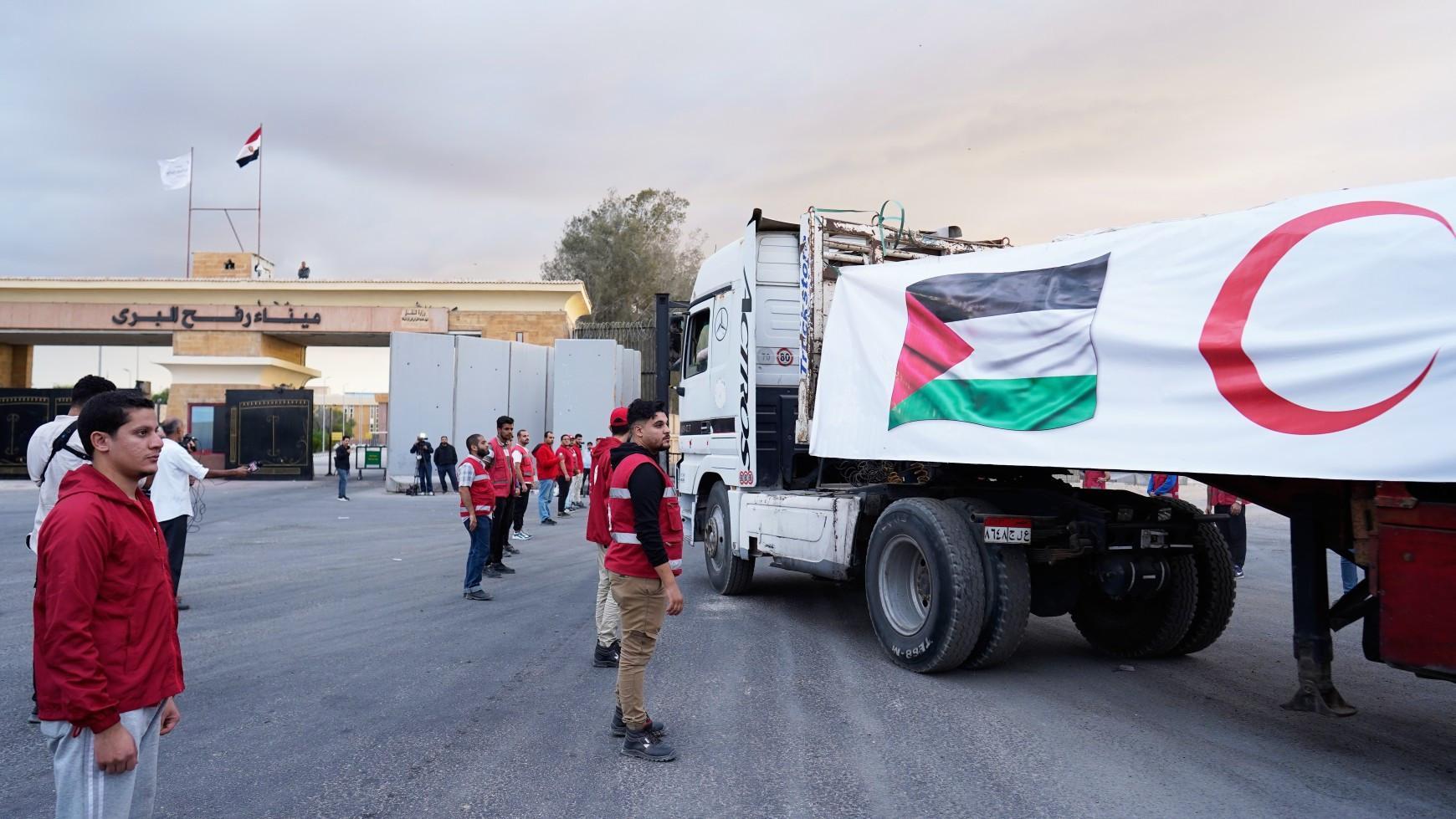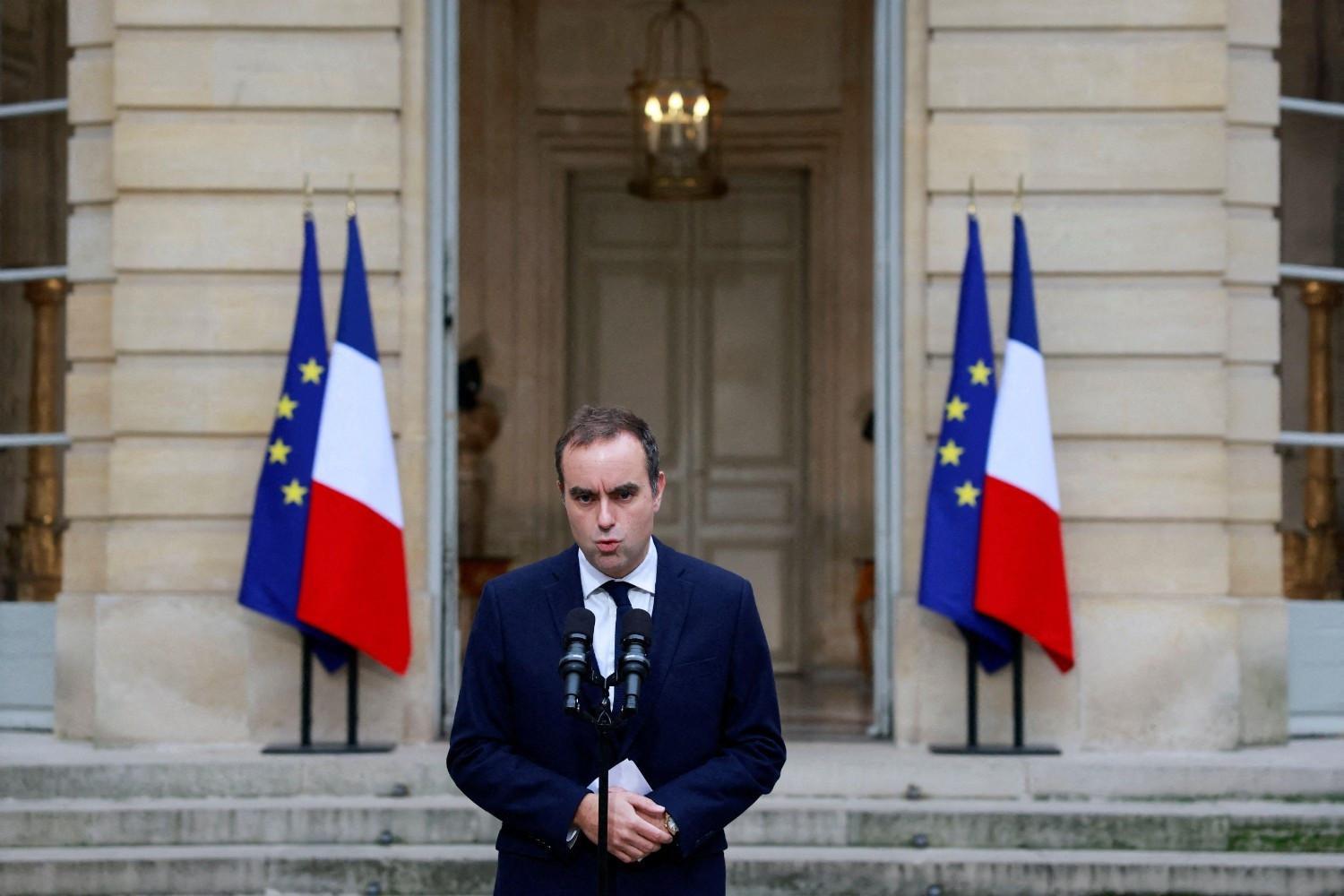Aid efforts ramp up for Gaza as Hamas prepares to release hostages
GAZA CITY

Preparations were underway on Oct. 12 for a ramp-up of aid entering the war-battered Gaza Strip, as Hamas will begin releasing Israeli hostages on Oct. 13 morning.
The Israeli defense body in charge of humanitarian aid in Gaza, COGAT, said that the amount of aid entering Gaza Strip is expected to ramp up on Oct. 12 to around 600 trucks per day, as stipulated in the agreement.
Egypt said it is sending 400 trucks carrying aid into Gaza. The trucks will have to be inspected by Israeli forces before being allowed in.
Media footage showed dozens of trucks crossing the Egyptian side of the Rafah crossing. The Egyptian Red Crescent said the trucks include medical supplies, tents, blankets, food and fuel.
The trucks will head to the inspection area in the Kerem Shalom crossing for screening by Israeli troops. In recent months, the U.N. and its partners have been able to deliver only 20 percent of the aid needed in Gaza because of the fighting, border closures and Israeli restrictions on what enters.
Meanwhile, Hamas confirmed that the group will begin releasing Israeli hostages held in Gaza on Oct. 13 morning, before U.S. President Donald Trump chairs an international summit in Egypt on his peace plan for the region.
However, the Wall Street Journal said that the first releases may take place late on Oct. 12 to accelerate timetable.
As part of the deal's first phase, Hamas will free the captives, 20 of whom Israel believes are still alive, in exchange for nearly 2,000 Palestinian prisoners.
Another Hamas source also said that that it will not participate in post-war Gaza governance.
"For Hamas, the governance of the Gaza Strip is a closed issue. Hamas will not participate at all in the transitional phase, which means it has relinquished control of the Strip, but it remains a fundamental part of the Palestinian fabric," the source told AFP.
Unlike other more top-heavy militant organizations in the region, Hamas' leadership has in the past been divided on key issues, including on the future administration of Gaza.
But where there appears to be no division among top members is on the question of disarmament, which the group has long described as a red line.
"Hamas agrees to a long-term truce, and for its weapons not to be used at all during this period, except in the event of an Israeli attack on Gaza," the source said.
Another Hamas official who requested anonymity to discuss sensitive topics had earlier told AFP that Hamas' disarmament was "out of the question.”
The first clause of Trump's 20-point plan calls for Gaza to become a "deradicalized terror-free zone that does not pose a threat to its neighbors.”
The plan also states Hamas will not have a role in future governance of the strip and that its military infrastructure and weapons should be "destroyed and not rebuilt.”
Under the Trump plan, as Israel conducts a phased withdrawal from Gaza's cities, it will be replaced by a multi-national force from Egypt, Qatar, Türkiye and the United Arab Emirates, coordinated by a U.S. -led command center in Israel.
On Oct. 11, U.S. Central Command (CENTCOM) chief Admiral Brad Cooper, Trump's Middle East envoy Steve Witkoff and Trump's son-in-law Jared Kushner visited Gaza, where hundreds of thousands of Palestinians were again on the move, returning to their devastated homes.
















